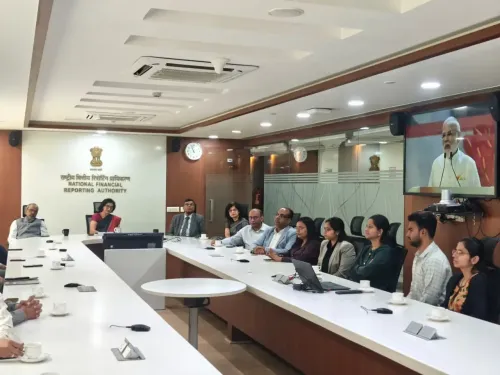Can Just 1 Hour of Social Media Reels on Smartphones Lead to Eye Fatigue?

Synopsis
Key Takeaways
- One hour of social media reels can lead to eye fatigue.
- Pupil fluctuations are greater with social media content.
- Extended smartphone use can result in physical and mental health issues.
- 60% of participants reported discomfort after prolonged use.
- Using blue light filters can help mitigate discomfort.
New Delhi, Aug 19 (NationPress) Are you experiencing digital eye strain? A recent study reveals that merely one hour of browsing social media reels on smartphones can result in eye fatigue.
Published in the Journal of Eye Movement Research, the study highlights that not only the duration of exposure to digital devices but also the nature of the content can contribute to this condition.
According to researchers from SRM Institute of Science and Technology, social media content induces greater pupil fluctuations compared to reading or watching videos.
The research team noted that extended smartphone use beyond 20 minutes can lead to various physical and mental health issues, including psychophysiological disorders.
Prolonged exposure to blue light from digital devices leads to digital eyestrain, sleep issues, and other vision-related problems.
To assess the effects of one hour of smartphone interaction on visual fatigue among young Indian adults, researchers devised an affordable, portable system to monitor visual activity.
This system tracked blink rate, inter-blink interval, and pupil diameter. Eye activity was recorded during one hour of smartphone activities, including e-book reading, video watching, and social media reels.
Researchers explained that social media reels display increased screen variations, which impact pupil dilation and decrease the blink rate due to the constant changes in screen brightness and intensity. This decline in blink frequency and the rise in inter-blink intervals or pupil dilation can contribute to visual fatigue.
In terms of discomfort, 60% of participants reported experiencing mild to severe discomfort after extended smartphone usage, with symptoms including eyestrain, neck pain, and hand fatigue.
Moreover, 83% of respondents acknowledged encountering some form of psychophysiological disorders, such as anxiety, sleep disturbances, or mental exhaustion. To alleviate discomfort, 40% of participants took measures like using blue light filters or enabling dark mode settings to mitigate the effects of screen exposure.









